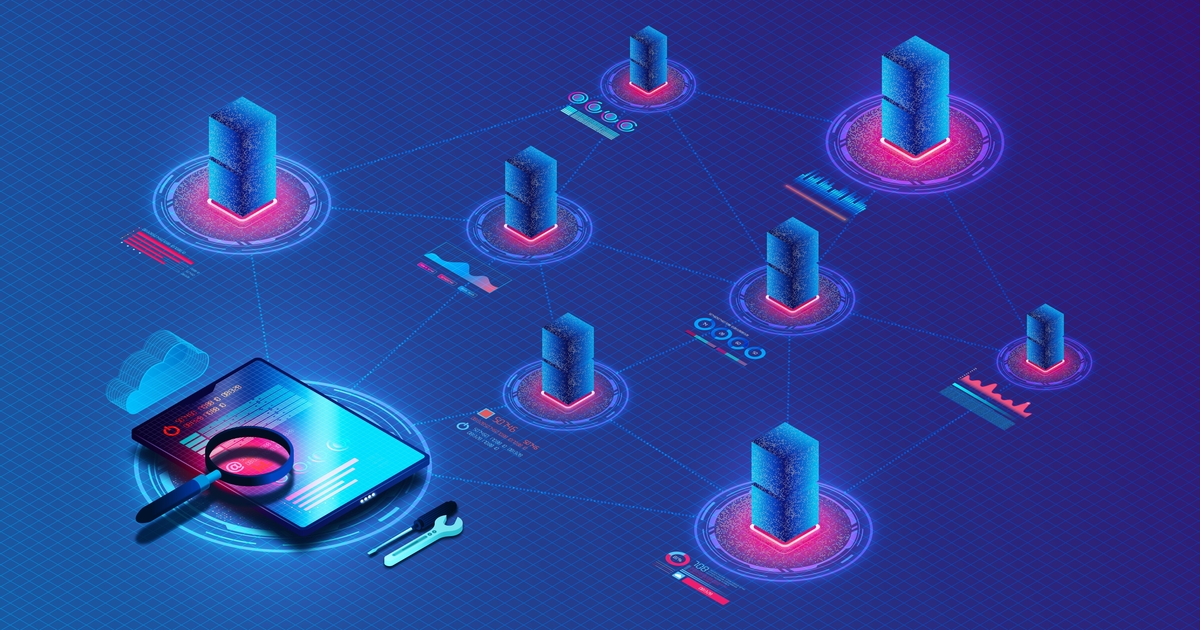With networks facing silos, open observability platforms are providing the visibility to spot network problems and automate remediation.
That’s why, earlier this month, BMC announced that it would acquire IT network and application observability company Netreo to offer a full-stack platform that includes both open observability and AIOps. Netreo’s OpenTelemetry observability platform incorporates application performance management (APM), network performance monitoring and diagnostics (NPMD), and IT infrastructure.
Gartner defines network observability as “the evolution of monitoring into a process that offers insight into digital business applications, speeds up innovation, and enhances customer experience.”
The idea is to increase visibility in application performance and improve productivity for developers. Poor visibility into multiple segments of a network leads to a problem called “watermelon dashboards,” wrote Nadeem Zahid, vice president of product management and marketing at cPacket Networks.
Meanwhile, ITOps teams are accustomed to silos with data in proprietary formats across multiple systems, wrote Mike Hicks, principal solutions analyst for Cisco ThousandEyes.
“It also takes an enormous amount of data to forecast the beginnings of a degradation or performance deterioration with a high degree of accuracy,” Hicks wrote. “Likewise, driving innovation also requires access to the right telemetry, and lots of it.”
Aiming for Full-Stack Visibility into Network Data
Netreo’s use of API-based insights along with SD-WAN monitoring appealed to BMC as a network performance and diagnostics strategy. The BMC deal is a sign that full-stack visibility into performance across network is a key need for organizations, according to Margaret Lee, senior vice president and general manager of digital service and operations management at BMC.
“The combined solution of Netreo and BMC Helix will deliver comprehensive insight spanning applications, networks, and infrastructure, empowering both IT and network teams at network operators to deliver reliable services while optimizing and automating processes across their entire landscape,” Lee told Network Computing via email.
BMC continues to invest in its non-mainframe, or distributed, business, says Stephen Elliot, IDC’s group vice president of infrastructure and operations (I&O), cloud operations, and DevOps.
“They’re adding capabilities around more data for different customers across DevOps across IT operations, infrastructure, platform engineers, and they’re driving more opportunities with their customers to better understand metrics, logs, traces, and events that are foundational for any of these discussions,” Elliot says. “Especially with network information, you’ve got to have it. It’s not a nice to have; it’s a need to have. I think that was some of the genesis behind making the acquisition.”
See also: How OCSF Aims to Simplify Network Security Monitoring
How OpenTelemetry Delivers Open Visibility for Organizations
OpenTelemetry, an open-source observability standard, is gaining traction to provide open visibility by allowing organizations to collect data like traces, metrics, and logs, Lee explains.
“Developers can use a combination of the OpenTelemetry API, SDK, Collector, to instrument their code to emit telemetry data,” Lee says. “It works particularly well for microservices-based applications as it helps developers identify hot spots and optimize their code.”
The advantage of OpenTelemetry for network operators is that it is vendor-agnostic, according to Lee. In addition, the combination of AIOps and ITSM provides the visibility to prevent issues, according to Lee.
Timely diagnosis of network issues is critical to maintain an acceptable user experience, Hicks wrote.
The point of using OpenTelemetry is to facilitate data collection for observability, according to Stephen Elliot, IDC’s group vice president, infrastructure and operations (I&O), cloud operations, and DevOps.
“OpenTelemetry is a growing standard for data collection,” Elliot explains. “It potentially could offer sort of the lowest common denominator, the bar that vendors will have to jump over to drive more value from the different varieties of data they need to collect.”
The Move into AIOps and Network Observability
The key benefit of platforms that combine AIOps and network visibility is access to a variety of data sources that can spot issues and remediate them before they become a problem for customers, Lee says.
“AIOps capabilities apply to telemetry and data ingested from multiple tools spanning network, infrastructure, and applications, and can not only reduce that noise but identify root cause issues and actionable insights,” Lee says.
Observability is important not only to network operators but also to the data it gathers, according to Elliot.
“We can talk about observability and AIOps. You’re only as good as not just the data you collect but also the analysis you can apply to it,” Elliot says. “It’s really about applying different analytic models to drive a particular outcome.”
Analytic capabilities get more valuable with the greater amount of network data coming from Netreo, which will allow network operators to apply different analytic models on BMC’s Helix platform,” Elliot explains.
“This offers a deeper amount of information and a broader amount of information that BMC Helix solutions can utilize,” he says.
Going forward, the analytics that organizations apply to data sets will be key, as well as the types of data and the metrics, logs, traces, and network applications. The push toward OpenTelemetry and AIOps shows how access to the right data is important for IT leaders, according to Elliot.
“You need different types of data in different types of models to understand root-cause analysis, ticket deflection, performance management, pattern matching, and recommendations,” Elliot says.
In a “decade of analytics,” data quality will be the key component in network observability.
Organizations must have the right type of data to solve operational, development, security, and customer service problems, Elliot says.
“For BMC, this deal gets them more data,” Elliot says. “It gives them the ability to apply this data to their existing types of analytics.”
He adds, “I think the IT executives have to realize that this is a marathon, not a sprint, and they’re going to have to really think deeply about who they work with and the types of [data analytics] models that they choose.”
Brian T. Horowitz is a Contributing Reporter for Network Computing.

Leave a Reply